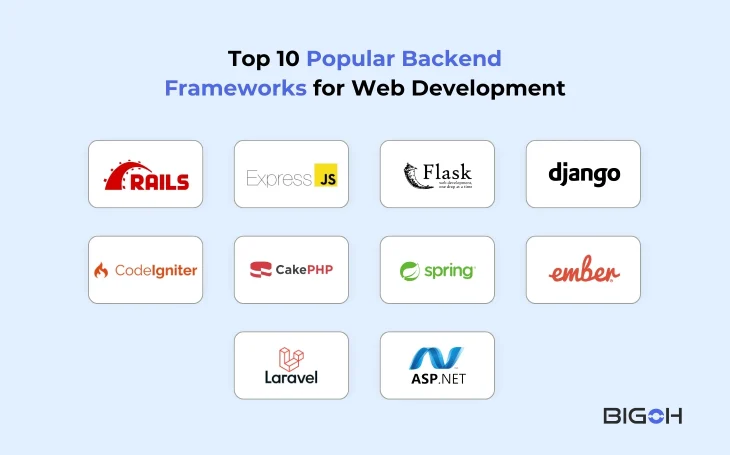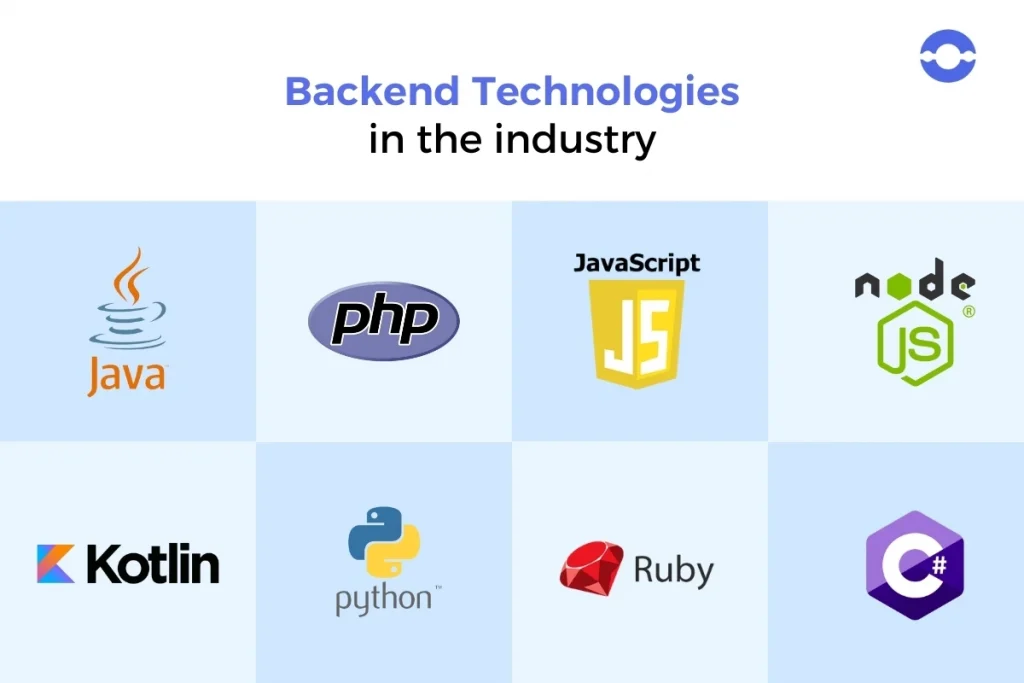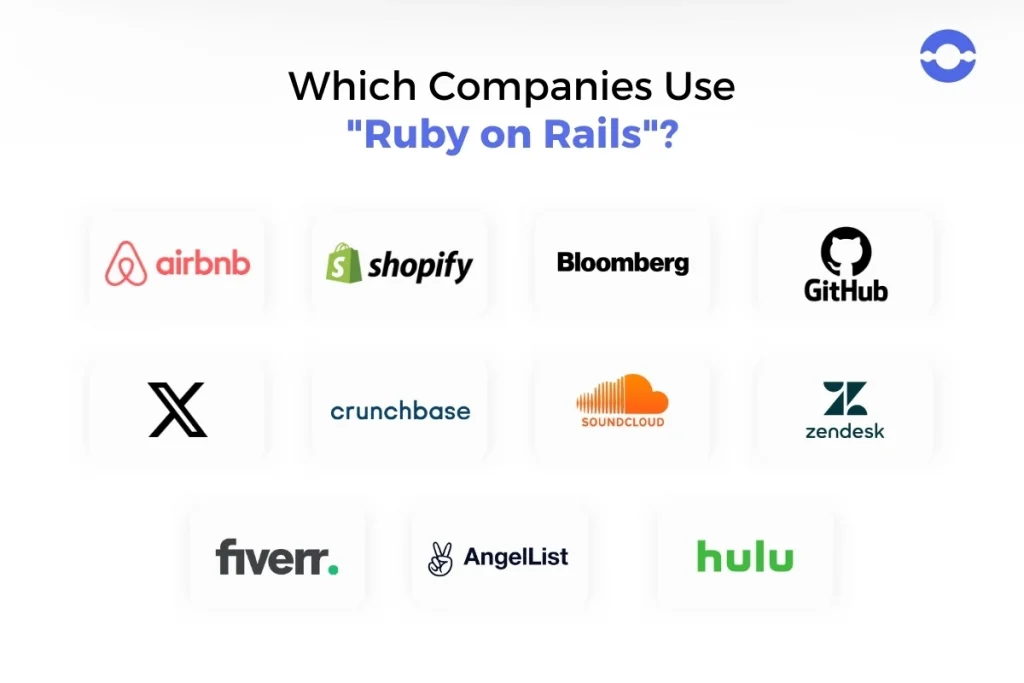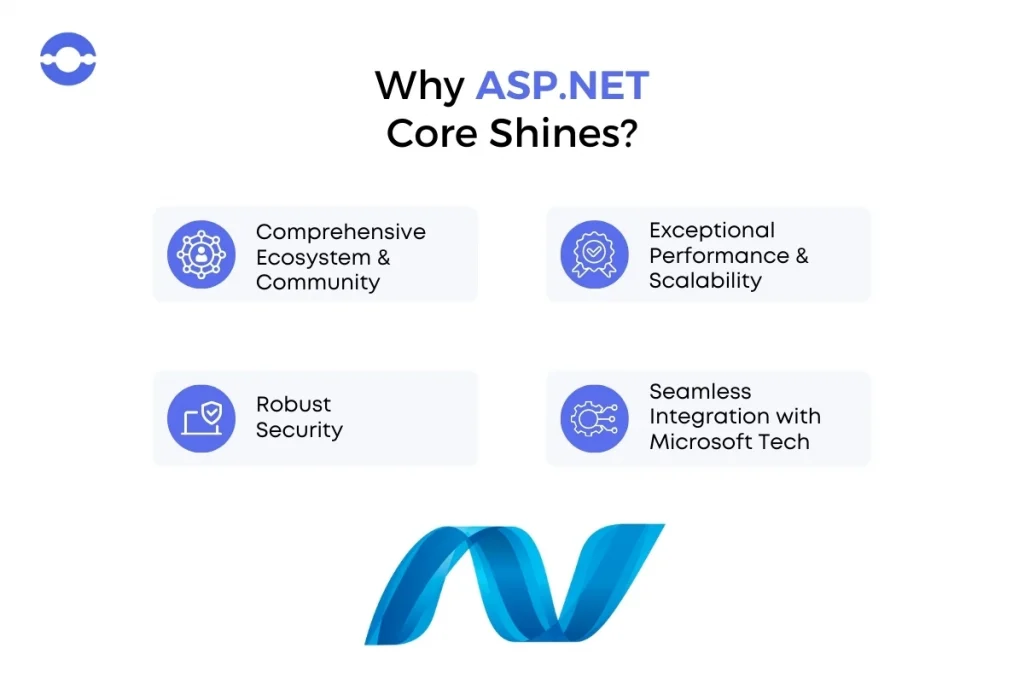
With 2025 on the horizon, the landscape of backend development continues to evolve, bringing exciting options for businesses at all levels. Whether you’re building a robust e-commerce platform, a cutting-edge mobile app, or a data-driven web service, the backend is the engine that powers your application.
But with so many options out there, how do you choose the best one for your project?
Guess you’re ready to see what’s trending. Let’s dive in and explore the most popular backend frameworks that are shaping the future of web development in 2024!
What is a Backend Framework?

But first, what exactly is a backend framework?
Think of a backend framework as the skeleton of a web application. It’s like when you’re building a house – the framework is the blueprint and structure that holds everything together. In the tech world, a backend framework is a set of tools, libraries, and guidelines that help developers create web applications faster and smarter.
Instead of starting from scratch, developers use these frameworks to handle all the under-the-hood stuff like database connections, managing user requests, and organizing business logic. Basically, it allows them to focus on the fun parts—creating features and making sure the app runs smoothly, without getting bogged down in technical details like processing requests or managing servers.
How to Choose the Right Framework?
There’s no “one-size-fits-all” when it comes to frameworks. Here’s a quick sheet of things to consider:-
- Project requirements: Know what your project needs and match the framework accordingly.
- Compatibility: Make sure the framework gels well with your existing tech stack.
- Ease of Learning: If your team has to spend ages learning a new framework, it might slow down progress.
- Community Support: The bigger the community, the better the resources and support.
- Scalability & Long-Term Viability: Can this framework grow with your app? Does it have a future?
Why is a backend framework essential for your project?
Using a backend framework is like adding turbochargers to your development process. Here are some of the reasons why it’s a game-changer:
- Efficiency Boost: Backend frameworks come with pre-written code and pre-built modules (like authentication or database management), saving both time and money—like a toolbox with ready-made tools.
- Security First: Built-in features safeguard your app against common threats, keeping your app and users secure.
- Modularity: Break your app into smaller, manageable pieces, allowing you to build, modify, or fix sections without affecting the whole.
- Consistency & Collaboration: Frameworks ensure cleaner, more organized code, making collaboration easier and reducing bugs.
- Community Support: A vast developer community offers resources, tutorials, and solutions to common problems.
- Seamless Integration: Easily connect your app to external services, APIs, or databases with available plugins or extensions.
- Adopt Best Practices: Frameworks follow industry standards, making your code more readable, maintainable, and easier to pass on.
- Ecosystem of Integrations: Frameworks come with built-in solutions for integrating third-party services, simplifying the process.
Top 10 most popular backend frameworks
Let’s get into the world of the current top backend frameworks and explore why they’re the powerhouse behind many successful web apps.
1. Ruby on Rails
When it comes to developer productivity and clean, maintainable code, Ruby on Rails (or just Rails) has been a long-time favourite. It’s built on Ruby, follows the MVC (Model-View-Controller) pattern, and thrives on its “convention over configuration” principle. Simply put, Rails gives you the structure you need to follow best practices without constantly repeating yourself.
But why has Rails been such a hit in the development community? Let’s break it down
Key Features of Rails:-
- Built on Best Practices: Tired of repetitive code? Rails’ DRY principle eliminates that, encouraging clean, scalable code that’s easy to maintain. With its MVC structure, even complex apps like GitHub are manageable.
- Speedy Development: If you’re pressed for time, Rails has you covered with gems, scaffolding, and ActiveRecord ORM—tools that help you launch quickly. Startups love its adaptability.
- Community and Support: Rails’ open-source community is always improving the framework, offering constant updates, security patches, and support when you need it.
- Cost-Effective: Rails is free and backed by a vast talent pool, making it budget-friendly without sacrificing quality.
Success Stories of Rails:
It’s no surprise that some of the world’s most successful companies are powered by it. Some include:

- Airbnb: What began as a simple room rental idea evolved into a global marketplace, thanks in part to Ruby on Rails. Rails allowed Airbnb to scale rapidly, handling huge user growth while maintaining performance. It enabled features like interactive maps, instant booking, and social elements such as reviews and messaging, fostering a worldwide community of hosts and guests.
- X (formerly Twitter): In its early days, Twitter used Ruby on Rails to manage its real-time interactions. Rails handled rapid user growth and features like tweets, retweets, and trends. While Twitter has since shifted its tech stack, Rails was pivotal in building the platform’s foundation.
- Shopify: Rails powers Shopify’s e-commerce engine, enabling smooth payment processing, product management, and order fulfilment. Its flexibility allows businesses of all sizes to create customizable storefronts and integrate third-party apps, ensuring Shopify scales effortlessly with its merchants.
2. Express.js
The Speedy and Flexible Sidekick to Node.js, Express.js is all about simplifying development. Whether you’re building a web app, a mobile app API, or a complex backend system, Express.js has the tools to make your life easier. Imagine you’re creating dynamic web pages or APIs on the fly—Express lets you do that without breaking a sweat. It boasts powerful routing, tons of HTTP utilities, and middleware support to help you manage incoming requests and responses like a pro.
So, what makes Express.js one of the best backend frameworks?
Key Features of Express.js:
- Strong Routing System: Think of routing as the GPS for your app, guiding users to the right place. Express.js makes handling requests, whether simple or complex API routes, super easy, making development of real time, dynamic web app very convenient.
- Middleware Magic: Middleware sounds techy, but it’s like a customizable toolbox for your app. With Express.js, you can add features like authentication, logging, or compression. It’s like a magic pipeline where you can tweak things as requests flow through your app.
- Templating Support: Need dynamic pages that update in real time? Express.js supports templating engines like EJS, Pug, and Handlebars, letting you build seamless, interactive user experiences without refreshing the whole page.
- Error Handling Caliber: Stuff happens, right? But with Express.js’s built-in error handling, you can catch and fix problems before they mess with your users. It’s like having a built-in safety net for your app.
- Scalability & Performance: Express.js scales effortlessly to handle anything from a small user base to millions of visitors. Its lightweight design ensures high performance, even when traffic surges.
Success Stories of Express.js:
Let’s look at some real-world examples of companies that use it to power their platforms.
- LinkedIn: LinkedIn leverages Express.js to power its real-time features like messaging and notifications. Its scalability allows LinkedIn to handle millions of users effortlessly, while the framework also supports LinkedIn’s API for third-party integrations.
- PayPal: PayPal relies on Express.js for secure, high-volume transaction processing. The framework underpins PayPal’s API, enabling easy integration for merchants, while its scalability ensures seamless performance during peak periods.
- Walmart: Walmart uses Express.js to drive key e-commerce functionalities such as product catalogues and checkout processes. It handles high traffic during peak seasons like Black Friday, ensuring fast and responsive user experiences.
- IBML: IBM builds both internal tools and external cloud-based applications with Express.js. Its flexibility allows IBM to quickly adapt apps to meet evolving business needs and scale efficiently as required.
3. Flash
Flask is the perfect choice for developers who value simplicity without sacrificing power. This Python-based framework is all about speed and efficiency, making it easy to build web apps and APIs quickly. Its minimalist design gives you just the essentials, but it’s flexible enough to let you add on whatever features you need as your project grows.
Why Flask Stands Out:
- apid Development: With its streamlined design, Flask lets you focus on building core features without getting bogged down by unnecessary complexity. You can get your app up and running in no time.
- Flexible & Customizable: Flask’s modular architecture means you can pick and choose the components you need, tailoring your app for optimized performance and functionality.
- Tapping into Python: As part of the Python ecosystem, Flask gives you access to an extensive library of tools and resources, making development smoother and more robust.
- Lightweight & Scalable: Despite its small footprint, Flask is capable of handling scalable projects, especially in cases where performance and resource efficiency matter most.
Success Stories of Flash:
- Pinterest: Pinterest relies on Flask’s flexibility to power its complex search algorithms, delivering accurate and fast search results to millions of users. With Flask’s scalability, Pinterest seamlessly handles a huge volume of images and user interactions, ensuring a responsive and engaging platform.
- Reddit: Flask plays a critical role in Reddit’s real-time features, such as live voting and comment threads. The framework’s asynchronous capabilities allow Reddit to maintain its vibrant, interactive community, while scaling effortlessly to accommodate its high traffic.
- Dropbox: Flask helps Dropbox create an intuitive, user-friendly interface for file management and collaboration. Its scalability ensures Dropbox can handle massive amounts of data while syncing files efficiently across multiple devices.
4. Django:
If you’re a developer who values speed, efficiency, and a sleek design, then Django might just be your best friend. One of the most used backend frameworks, Django is built on the open-source Python language that’s become a go-to for many programmers.
What makes it stand out? Django streamlines the entire development process with a user-friendly syntax and an MVT (Model-View-Template) architecture, ensuring your web apps not only look great but perform flawlessly. Whether you’re building a simple site or a complex system, Django offers robust security and scalability, making it to the list of fastest and most versatile backend frameworks out there.
What makes Django one of the most popular frameworks:
- Rapid Development: Get your app from idea to reality in no time! Django’s built-in features reduce the need for repetitive code, so you can focus on the bigger picture and develop complex applications faster.
- Robust Security: Worried about hackers? Django has your back. It comes with strong security features that protect against common attacks like SQL injection and cross-site scripting right out of the box.
- High Scalability: Whether you’re dealing with hundreds of millions of users, Django’s scalability ensures that your app runs smoothly under heavy traffic, optimizing resources like images and HTML for peak performance.
- Flexibility & Versatility: Django is modular and highly adaptable. You can easily swap out components or add new features without having to start from scratch. Plus, with a huge community and thorough documentation, making changes during development is a breeze.
Success Stories of Django:
Here are some of the prime instances of how Django has been a game changer:
- Instagram: Instagram leverages Django to handle its core features—posting, following, exploring—and manage millions of users. As Instagram grew, Django’s scalability ensured users could upload, filter, and share content seamlessly. Its flexibility allowed Instagram to introduce new features like Reels, keeping the platform dynamic.
- The Washington Post: Django powers The Washington Post’s CMS, allowing journalists to easily create and publish news. It enables personalized content recommendations and ensures quick page loads, enhancing reader experience.
- Mozilla Firefox: Mozilla Firefox uses Django for its Marketplace, allowing developers to share extensions and themes. Django’s efficient code provides a smooth experience for both developers and users, supporting a thriving Firefox community.
5. CodeIgniter:
Released on February 28, 2006, by EllisLab, CodeIgniter is a very popular backend PHP framework designed for developers seeking simplicity and power in building dynamic web applications. It’s known for its well-organized documentation, exceptional stability, and robust support, making it easy to dive in and get started.
CodeIgniter’s routing system directs users to cached pages, enhancing performance and speeding up load times. Unlike many frameworks, it doesn’t lock you into the MVC (Model-View-Controller) paradigm, offering complete freedom to structure your app as you see fit. Plus, it supports third-party plugins, allowing seamless integration of complex features.
Why CodeIgniter is a Top Choice:
- Error Handling Made Easy: CodeIgniter offers a user-friendly interface for detecting and resolving errors, ensuring smooth website performance and an improved user experience.
- Smooth Migration: Whether you’re updating databases or moving to a new server, CodeIgniter simplifies migration, making transitions hassle-free.
- Strong Community Support: A large pool of skilled developers is always ready to provide help, ensuring you get the best possible support for advanced features.
- Fast Development: CodeIgniter shines when it comes to rapid development. With less code required, developers can get projects off the ground quickly.
- Simple & User-Friendly: Its straightforward interface makes development and database management a breeze, even for beginners.
Success Stories of CodeIgniter
Let’s glance through some of the major projects based on CodeIgniter:
- Buffer: CodeIgniter’s scalability and flexibility have allowed Buffer to handle vast amounts of social media data and integrate with numerous platforms, all while maintaining a fast, responsive user experience.
- TechCrunch: As a content-heavy site, TechCrunch benefits from CodeIgniter’s performance optimization and scalability, allowing them to efficiently manage articles and handle high traffic.
- EasyBlog: CodeIgniter’s integration capabilities enable seamless connectivity with Joomla, offering users a customizable, high-performing blogging platform.
6. CakePHP
CakePHP is one of the most well-known open-source PHP frameworks out there, designed to make web development easier, faster, and more structured. Built on the Model-View-Controller (MVC) architecture, it separates your application’s data, logic, and presentation layers, making everything more organized and maintainable. Licensed under MIT, it’s free for developers to use, so you can build powerful web apps without worrying about licensing fees.
But what makes CakePHP really stand out is its focus on solid software design principles like active record, front controller, and “convention over configuration.” This means you spend less time configuring things and more time actually building your application.
What Makes CakePHP Awesome:
- Efficient Routing: CakePHP’s routing system lets you define custom URLs, making your app more user-friendly and boosting SEO. No need to settle for boring, auto-generated URLs!
- Built-in Caching: With its caching feature, frequently accessed data is stored in memory, reducing database queries and speeding up your application’s performance.
- Templating Made Simple: CakePHP has its own templating engine, helping you create and manage templates with ease. This keeps your app’s design process smooth and makes ongoing maintenance less of a headache.
- Community-Driven: The CakePHP community is active and engaged, constantly improving the framework with new features and updates. It’s like having a whole team of developers working with you!
Success Stories of CakePHP
Here’s some of the instances of successful web applications build on CakePHP:
- NinjaCart: One of India’s leading e-commerce platforms, NinjaCart, leverages CakePHP to power its product catalogue, shopping cart, payment systems, and order tracking. CakePHP’s scalability ensures NinjaCart can handle the heavy traffic of an e-commerce platform seamlessly.
- Buffer: The popular social media management platform uses CakePHP to build features like post scheduling, analytics, and team collaboration tools. CakePHP’s performance optimizations help Buffer manage a large user base and handle multiple social media accounts without breaking a sweat.
- TechCrunch: A leading technology news site, TechCrunch uses CakePHP’s robust content management system to efficiently manage and publish articles. With CakePHP’s scalability, TechCrunch handles high traffic volumes while maintaining a smooth, fast user experience.
7. The Spring Framework:
The Spring Framework, developed by Pivotal Software, has become one of the most popular and go-to backend frameworks for Java developers around the world. It empowers you to create simple, flexible, and high-performance applications that can scale with your needs.
While it doesn’t impose any specific programming patterns, Spring’s compatibility with the Enterprise JavaBeans model has solidified its popularity in the Java community. This means you can leverage its core features while utilizing extensions for more complex enterprise-level applications.
Developers flock to Spring for its ability to create powerful, robust applications. Big names like Expedia, Amazon, Spotify, and MIT rely on Spring’s capabilities to enhance their systems and improve performance.
Why Choose Spring?
- Transparent Structure: Spring’s Model-View-Controller (MVC) architecture ensures a clean separation of concerns, keeping large projects organized and readable, which is essential for long-term success.
- Dependency Management: Spring’s Dependency Injection streamlines dependency handling, reducing errors and making your codebase cleaner and more maintainable.
- Simplified Database Interactions: Spring’s Data Access Framework simplifies database tasks, making CRUD operations and data management easy without unnecessary complexity.
- Centralized Handling: With Aspect-Oriented Programming (AOP), tasks like logging, security, and caching are managed in one place, allowing your core code to stay focused on key functionality.
Success Stories of Spring
Several big organizations have been keen on working on their projects with Spring, some of the popular ones comprise:
- Expedia: Spring’s MVC architecture and data access framework allows Expedia to manage complex transactions—like booking flights, hotels, and cars with ease. Its integration capabilities enable partnerships with various travel providers, while Spring’s scalability ensures smooth operation even during peak travel seasons.
- Amazon: Spring plays a key role in Amazon’s e-commerce platform, helping manage vast amounts of product and customer data. It also supports Amazon’s microservices architecture, enabling independent development and deployment of different components, boosting flexibility and speed.
- Spotify: For Spotify, Spring’s scalability is essential for streaming music to millions of users. Its microservices architecture allows separate development of features like recommendations, while the data access framework helps analyze user data for personalized music suggestions.
8. Laravel:
Laravel is an open-source backend framework that’s taken the PHP world by storm, making web application development not just easier, but also a whole lot more enjoyable. With its modular packaging system and a handy dependency manager, Laravel has earned its spot as a top choice for backend developers everywhere. It’s not just a framework; it’s a vibrant ecosystem designed to help you build everything from simple blogs to complex enterprise applications.
Why Developers Love Laravel:
- MVC Framework: Laravel’s Model-View-Controller (MVC) structure brings clarity to your code, making it easier to maintain and test, helping you catch issues early.
- Eloquent ORM: No more complex SQL queries! Eloquent simplifies data management, making it easy to handle database tasks and define relationships, perfect for managing complex data with ease.
- Blade Templates: Blade’s expressive syntax and reusable components make template creation efficient, allowing you to focus on crafting views without diving into complex code.
- Artisan Commands: Laravel’s Artisan commands automate repetitive tasks and allow custom commands, saving time and streamlining your workflow.
Success Stories
Let’s look at the key projects based on Laravel:
- Laracasts: Laravel’s simplicity powers Laracasts, an online learning platform that offers flexible, top-notch video tutorials. The vibrant community makes it a go-to hub for learning Laravel.
- Inspiring Work: Laravel’s scalability has been key for Inspiring Work, supporting a large user base and transactions. Its flexibility allows custom solutions to meet business needs while leveraging Laravel’s community support.
- Voyager: Voyager (Laravel’s admin package) integrates with Laravel to offer easy admin panel creation. Its flexibility allows tailoring the admin interface to project needs, with a supportive community to help along the way.
9. Ember.js:
If you’re looking for a framework that can handle the complexity of single-page applications (SPAs) without slowing you down, Ember.js is here to deliver. Based on the MVVM (Model-View-View-Model) architecture, Ember helps web developers build extensible apps using well-established idioms and advanced practices.
But it’s not just limited to the web—Ember also supports mobile and desktop applications. A cool example? Apple Music in the iTunes desktop app is powered by Ember! With a constantly growing community, frequent updates, and support from major companies like Heroku, Microsoft, Netflix, and Google, Ember is a go-to backend language for developers who value productivity and scalability.
Why Choose Ember.js?
- Improved Productivity: Ember’s conventions and tools help you write code faster and more efficiently, allowing you to focus on delivering features rather than fighting with setup or repetitive tasks.
- Better Maintainability: The structured nature of Ember makes maintaining and updating your code a breeze, even as your app grows in complexity.
- Scalability: Need to scale? No problem. Ember is built to handle complex apps and large user bases with ease, making it perfect for long-term growth.
- Strong Community: With a large, active, and supportive community, Ember developers are never alone. Frequent updates and a wealth of resources ensure you’re always on the cutting edge.
Success Stories:
Check out these successful applications powered by Ember.js:
1. Twitch: Twitch, the leading live-streaming platform, uses Ember.js to create an interactive interface. Features like chat, emotes, and donations function smoothly, while Ember ensures high-quality streams even with large audiences.
2. The New York Times: Ember.js powers The New York Times’ content management system, enabling quick article creation and publishing. Its performance optimizations ensure fast, lag-free access to content, enhancing the reader’s experience.
3. TED: TED uses Ember.js to deliver a seamless experience for TED Talks. Ember supports search functionality and community features like comments and sharing, encouraging user engagement.
10. ASP.NET
ASP.NET Core, developed by Microsoft, is an open-source, cross-platform web application framework that’s packed with flexibility.
Whether you’re building apps for Windows, macOS, or Linux, ASP.NET Core has got you covered. Built on the .NET Core runtime, it too offers a modular architecture that makes it easy to create maintainable, scalable, and high-performing applications—all with just one codebase.
If you’re looking for a framework that plays well with Microsoft’s tech ecosystem while offering top-tier performance, ASP.NET Core might be your perfect match.
Why ASP.NET Core Shines

- Comprehensive Ecosystem & Community: With a rich library of tools, frameworks, and resources backed by a massive community, ASP.NET Core offers a supportive environment for developers at all levels.
- Exceptional Performance & Scalability: ASP.NET Core is designed to handle large user bases and complex applications with ease, making it a great choice for high-traffic websites and enterprise-level solutions.
- Robust Security: Built-in security features help safeguard your application from common vulnerabilities, with regular updates to keep your project secure.
- Seamless Integration with Microsoft Tech: If you’re already using Microsoft products, ASP.NET Core integrates seamlessly with services like Azure, Office 365, and SQL Server, reducing complexity and making development smoother.
Success Stories
See how ASP.NET has been used to create these remarkable projects:
1. Office 365: ASP.NET Core powers key Office 365 apps like Outlook Web Access and SharePoint Online. It ensures seamless integration across Microsoft services while offering robust security to protect sensitive user data, making it a reliable choice for millions of users worldwide.
2. Disney+: Disney+ uses ASP.NET Core to handle its large user base and extensive content library. The framework efficiently manages high traffic, ensuring a smooth and user-friendly streaming experience, even during peak times.
3. Monster Jobs: Monster Jobs relies on ASP.NET Core for its job search functionality and user account management. The framework handles large-scale data, providing a seamless experience for job seekers and employers with its scalability and performance.
Conclusion
We’ve explored the ten most powerful frameworks that have shaped the web development landscape in 2024. From tried-and-tested veterans to exciting newcomers, each of these tools brings something unique to the table with the right choice depending upon your project’s needs and future goals.
So, why not pick one or two that stirred your interest and start experimenting?
In case you’re unsure about the most suitable framework for your next big idea, Big Oh Tech has got your back! Our team of over 75 highly skilled developers can help you select the perfect backend framework and plan your grand project from scratch, ensuring your web application is fast, scalable, and secure.




